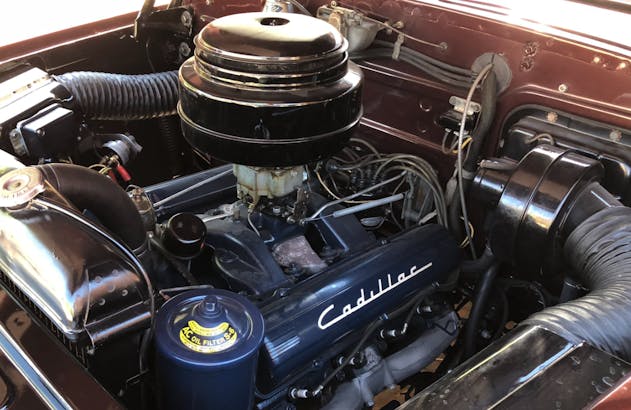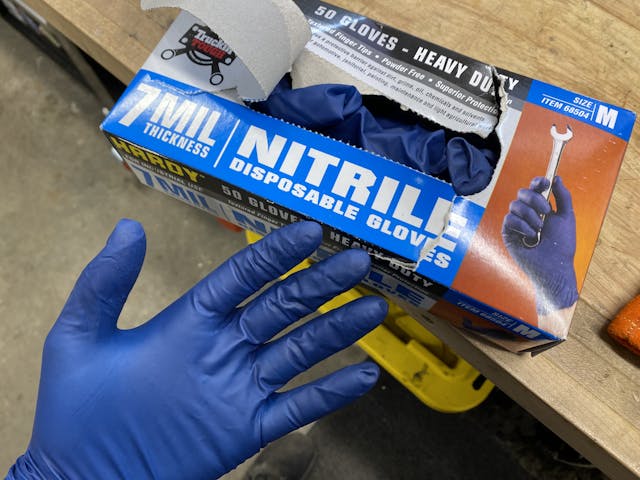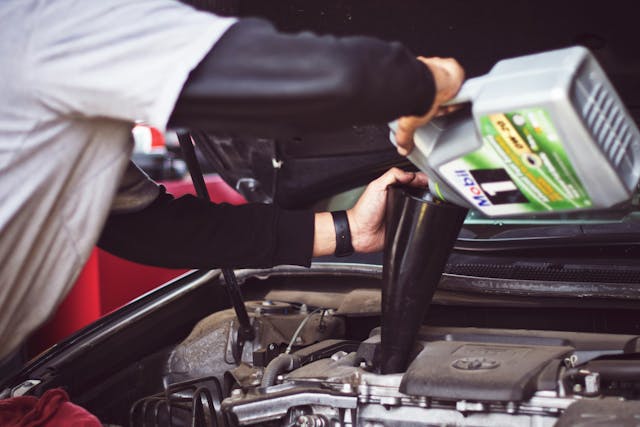8 oil change dos and don’ts
It’s a small job that somehow became a rite of passage for gearheads: Oil changes. The draining and refilling of engine oil is the first task that many budding wrench-turners undertake, and its certainly an important one. Like any other task in the automotive world, there are some pieces of institutional knowledge that comprise the key dos and don’ts for a smooth oil change. So let’s put these lessons learned out in the open, with the mission of shortening the process for newbies. And perhaps to reinforce some best practices for you veteran mechanics?
Don’t go crazy with warm-up

Modern oils are pretty amazing at suspending particles and contaminants, but there is still some junk that sinks down to the bottom of the pan. It needs to be stirred up to ensure it escapes when you pull the drain plug. Starting the engine and letting it idle for a minute or two is perfect for that final circulation. Run it any longer and you’re rewarded with nothing more than scalding hot oil that does nothing more than burn you. Before you pull that (drain) plug, give the engine a minute after shutting down, allowing the oil to drain to the pan from the nooks and crannies higher in the engine. But before you get underneath the vehicle to do the deed, remember you must…
Wear disposable gloves

Nitrile gloves keep you from soaking up solvents and oils into your skin. I’ve found 7mil thick to be a nice sweet spot of durable and affordable.
We all know the guy at the auto parts counter who has seriously gnarly hands from all the years being soaked in oil over decades of engine builds. That’s the visible damage. The invisible damage is sitting in your internal organs. All the hydrocarbons that get absorbed through the skin and are processed in our gut where they can’t be broken down. They end up accumulating in our body, which can cause serious health complications after years and years of chemical exposure. Preventing those issues is easy as putting on a pair of nitrile gloves. Use them even if it’s only for pulling the filter and drain plug, which you can do efficiently with…
The drain plug trick

It’s not groundbreaking, but nothing feels better than the perfect pull on a drain plug to ensure you don’t get any oil on your hand. The trick is pressure, not pulling. As you unthread the plug by hand, push in–against the bolt as in comes out–so the threads act as a seal with the outer edge. With a little practice you can get the pressure right (while not rocking the plug in the threads) and can spin the plug a full turn to feel for the “click.” That click means the bolt overlapped the last thread. With a swift motion away from the direction of oil flow, remove that now-loose plug. Presto! This can make thin viscosity oil changes much cleaner, and thick stuff like 20-50 can sometimes be spotless. In your excitement of not having a mess to clean up after draining, make sure you…
Don’t over tighten the drain plug or filter

It’s come to the point where stuck filters and stripped drain plugs are no longer a joke. Neither the filter nor plug require any real torque when installed properly. Use a small amount of oil to lube the filter’s rubber seal, then spin it into place. After the gasket seats on the housing, turn it only about three-quarter of an additional turn. Some applications might call for a full turn, but that is usually reserved for heavy duty equipment. Any tighter than what the filter manufacturers call for and you run the risk of deforming that rubber seal, which could cause oil to leak past the seal. That’s bad news. Any oil spillage is bad, so when you are filling…
Just use a funnel

The oil fill port on most engines is in that perfect spot where it looks like you could pour directly into it, except that’s a lie. They seem to be ideally located, but cleaning up if you miss (by even the smallest margin) can be a major pain. Are we really going to work so hard to spot and address leaks, to keep our engines clean, and just ruin it while doing routine maintenance?
I’m not. A funnel all but guarantees I won’t have to do any clean up after filling, even if I’m distracted or letting my 7 year-old niece do the filling. Putting in that fresh oil feels good, but be careful and…
Don’t overfill

This shows the rotating assembly without the oil pan and it’s easy to tell how oil at too high of a level would be bad.
Too much oil is just as bad as not enough. Seriously. The oil level in a wet-sump engine is carefully calculated to keep the rotating assembly from whipping through the oil. That action causes foaming, and oil foam pushed through the oiling system is the same as not having oil at all. I don’t need to tell you how bad that can be, so check the service or owners manual for the proper fill level. When done, look at the dipstick as a double check. Luckily, the empty oil containers you now have at this point are are perfect to…
Recycle your used oil

It’s never been easier to properly recycle used oil, so there is no excuse to do otherwise. Just about any auto parts store takes it, so they should be your first trip in your freshly serviced vehicle to “return” your oil. Be sure to capture oil in a non-contaminated pan so that the oil can actually be recycled. Coolant is the main enemy here, so be sure to flush your drain pan before the oil change. Luckily you don’t have to worry about how dusty or dirty the pan is, but other fluids can defeat the purpose of recycling. But before you make the trip to recycle the oil, be sure to…
Reset the computer (or write down your service date)

Modern cars have an oil life monitoring system. Whether you trust it is a personal preference, but for the sake of eliminating confusion, go ahead and reset it now. Most reset procedures involves cycling the ignition key and pressing the throttle pedal a certain number of times. The service manual will outline it, or a quick search to an online make/model specific forum will have the instructions. If your vehicles are of the manual variety, write down the oil change date in a log book. Or consider service tracker kept in the car or garage, as it keeps you from forgetting what’s been done. Not to mention thisa paper trail shows good stewardship to a potential next owner, which can mean an easier sale for more money.
In all, oil changes can be simple and rewarding for newbies and DIY enthusiasts alike. Following these best practices will not only keep your vehicle happy, but also make the experience better for you each time. Do you have something specific you add to this process? Let us know about it in the comments below.
***
Check out the Hagerty Media homepage so you don’t miss a single story, or better yet, bookmark it. To get our best stories delivered right to your inbox, subscribe to our newsletters.



Don’t forget to make sure the old gasket comes down with the old oil filter and that you don’t double gasket!
Start the engine and look under the vehicle for leaks. I left a 12″ wide strip of oil down the driveway because I was in a hurry after a oil change and had done this exact thing!
Great time to grease the front end (if possible – most modern junk doesn’t have grease fittings), too.
Advice. Checking that the old oil filter seal is not still on the block, is a must.
Excellent article! I say Amen to all these pointers.
Thank you!
Safety first. However you do it, ramps, jack stands, make sure you are safe under vehicle. I know first hand being a retired Philly firefighter called out to get guys out of trouble.
If you are putting in an additive of any kind, zinc or whatever, subtract the amount of what you put in, from the amount of oil you are now refilling or you will overfill your engine.
An old time Greyhound Bus driver told me their “oil change” cosisted of changing the filter and adding a quart. Don’t kill the messenger.
I always fill my new filter with new oil before I spin it on. That reduces the time that the engine runs dry when you start it for the first time.
Maybe this has already been mentioned but an old mechanic (don’t take advice from a new mechanic) told me to get 2 rare earth magnets and attach them to your oil filter. This attracts and captures any minute metal particles that might be going thru your system. So….I did like he said and I have had the same magnets on there for several years now. I have never cut open a filter like you see in the youtube vids but it didn’t cost much for the magnets (Dollar Store brand) and they stick like, well, magnets and are re usable.
I keep a (small) log book in the glovebox for all car repair & maintenance.
Using a label maker to affix a small reminder to the windshield or door jamb is another idea.
I usually do my own oil changes, especially after having a bad experience at a quick change oil shop. I won’t mention the name as it was not the shops fault but a distracted employee. While on a long rode trip pulling a travel trailer, we hit the oil change time. My cousin recommended a shop he used in the Denver area. When we stopped for fuel some 250 miles out of Denver I notice a rather large oil puddle under the truck, after I returned from going inside to pay, my first thought was someone has a problem, never thinking it was me. When I passed between the truck and trailer I noticed oil splattered all over the front of the trailer. Upon popping the hood and checking my oil level I discovered the oil level was showing a little over an inch and half above the full mark. The tech had evidently forgot to drain the old oil out before adding the new. Thank God it didn’t ruin the engine, it just blew the rear seal out, which was costly, but not as bad as a new engine would have been on vacation. Since then if I have anyone else change my oil the first thing I do is check the dip stick oil level, before driving away.
Going back to 77, I had a brand new 1977 Oldsmobile Cutlass Supreme Brougham. Decided to do the oil change in the driveway………got the filter, oil and a grease gun ready. Jacked the car up, drained the oil then took off the filter. Put the drainplug back in and grabbed the oil filter that was still in the box. Get that on, lower the car and put 5 quarts of oil in………all is good.
I lean into the car and turn the key and I immediately hear a gurgling sound from under the car………shut the car off and look underneath………….had 3 quarts of oil blow out from the FILTER…….the filter was still there and tight but covered in oil and still dripping. Got underneath and drained the remaining oil and took the filter off. Everything looked fine, the filter gasket was still there???? I then looked at the old filter and its number and then the number on the new filters box………BOTH the same. Then I see the number ON the new filter and IT was DIFFERENT. Someone must have been looking at the filters in the store and put them into the wrong box. The difference in filters was the right one had a gasket closer to the outside edge and the wrong one had the gasket inward……….3 quarts of oil blew out in a few seconds.
ALWAYS CHECK THE NUMBER ON THE FILTER ITSELF, NOT THE BOX!
Regarding an older Motorhome oil change, such as with the 440 motor, major oil plug tightening is required, such as using a wrench extension pipe, ask me how I know!
Every one should feel so lucky they can change their oil , I have no choice but to rely on dealerships for my Corvettes, I was disabled as a young man .
I always fill my filter with oil before installing it. You can even put some in the filters that go in sideways.